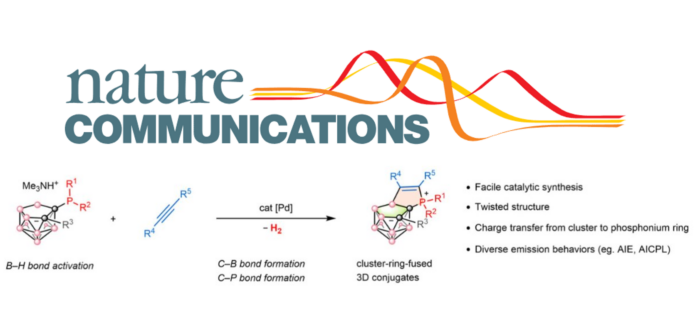Heteropolycyclic molecular systems, which are essential components in the fields of materials and pharmacology, frequently consist of 2D extended organic aromatic rings. Here, we introduce a type of inorganic-organic hybrid 3D conjugates by merging an aromatic boron cluster with a phosphine and a ?-conjugated unit. To achieve this, a couple-close synthetic strategy via B–H activation of nido-carboranes with alkynes has been developed, which leads to diverse boron cluster-extended phosphoniums in a twisted structure with high yields under mild conditions. Experimental and theoretical results reveal that the fusion between the boron cluster and the formed borophosphonium heterocycle facilitates electron delocalization throughout the structure. The unusual framework demonstrates distinct properties from bare boron clusters and pure aromatic ring-extended counterparts, such as improved thermal/chemical stability and photophysical properties. Thus, the boron cluster-based 3D conjugates expand the library of aromatic-based heterocyclics, showcasing great potential in functional materials.
TThis work has been carried out in collaboration between the group of Prof. Deshuang Tu, Prof. Zhuangzhi Shi, Prof. Hong Yan from Nanjing University (China), Prof. Jordi Poater from IQTCUB-Universitat de Barcelona, and the group of Prof. Miquel Solà from the IQCC.
It has been recently published open access in Nature Communications:
Z. Sun, J. Zong, H. Ren, C. Lu, D. Tu,* J. Poater,* M. Solà,* Z. Shi,* H. Yan*
“Couple-close construction of non-classical boron cluster-phosphonium conjugates”
Nat. Commun, 2024, 15, 7934.
DOI: 10.1038/s41467-024-51506-3
Girona, Sep 23rd, 2024
For more info: ges.iqcc@udg.edu

